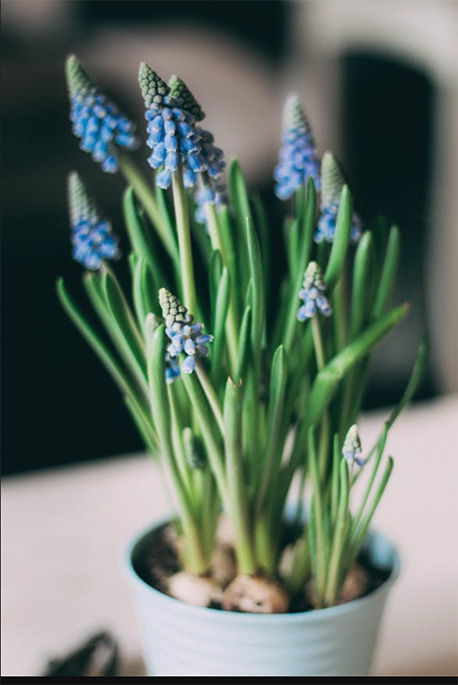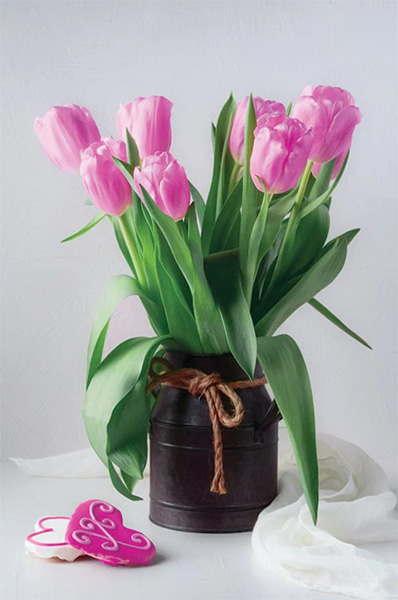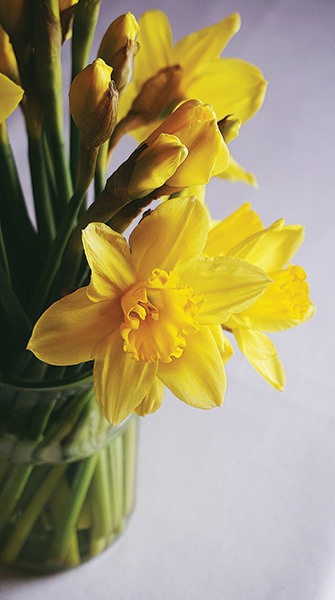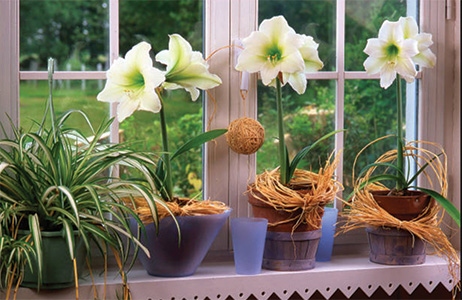Forcing bulbs is a wonderful way to bring about an early spring inside your home while winter winds are still blowing outside. There are many spring bulbs you can choose to force indoors, including amaryllis, daffodils, paperwhites, tulips, grape hyacinths and crocuses.
• Selecting bulbs is the first step to success. Choose firm, healthy bulbs with no soft spots, mold or off smell. The larger the bulb, the larger the bloom.
• To prepare bulbs for forcing, place them in a cold garage (35- 45 degrees) or refrigerator for 10-14 weeks. Called pre-chilling, this process mimics winter temperatures outside and is a requirement for successful blooms. If you use a refrigerator, make sure no fruit, especially apples, are stored in the same appliance. Prior to planting, soak bulb’s base in lukewarm water to hydrate the root area.


• Forcing can be done in water or soil. If you’re using water, you’ll need a container with small pebbles in the bottom. There are special bulb-forcing vases with a narrow neck and wide mouth, allowing only the bulb’s roots to reach the water.
• A flowerpot, vase or pan also can be used successfully. Place bulbs pointed side up, burying the base halfway in rocks. Add water to cover the lower one-fourth of the bulb. Leave the plant in cool area until leaves are grown, then move the plant to a warmer area for a flower stalk to develop.
• If you decide to force bulbs in soil, select a good grade of potting soil, not soil from your garden. Potting soil is sterilized and reduces the chance of contamination by insects and disease. Place bulb pointed side up one-fourth of the way beneath the soil surface. Keep watered in cool location until a flower stalk emerges, then move to a warmer location until flowering.
• After flowering, cut the flower stalk off and move the plant outside to the garden area. Some forced bulbs will bloom the next year at the “regular” bloom time.
 As you attend to your bulbs, make sure you also tackle the other garden tasks that should be on your to-do list this month:
As you attend to your bulbs, make sure you also tackle the other garden tasks that should be on your to-do list this month:
• Summer or fall blooming shrubs may be pruned during dormant season. Prune diseased, dead or broken limbs first. Branches that cross each other will rub the bark open, allowing for disease and weakened limbs. Remove any branches that cross or touch. Finally, prune for form, cutting just above an outward-facing bud. This allows for more air circulation in the plant’s interior, reducing chances of disease.
• Winter is the best time to transplant trees and shrubs, allowing time for them to become established before hot weather and the flush of new leaves and flowers, which use a tremendous amount of plant strength.
• Plan for next spring’s garden, either ornamentals, vegetables or both. Perusing seed and plant catalogs is always fun. Dreaming of planting new varieties is an exciting pastime.



